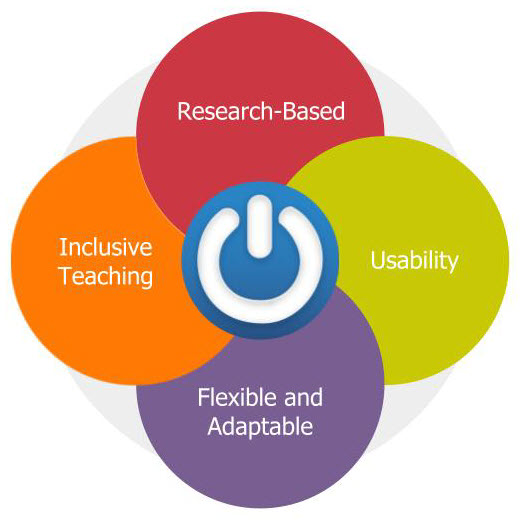Even prior to searching for content, it is important to think about what separates high-quality instructional materials from the average. Why consider quality before searching? Consider these statistics:
"Improving the quality of curriculum is 40x more effective than class-size reduction" (Boser et al., 2015).
In a single school year, the average student spends 80% of their available time on assignments that are not high quality (TNTP, 2018).
In this lesson, we'll look at a number of lenses you can use to evaluate learning materials, as well as established quality assurance rubrics to assist. It is important to note that items appearing in Open Space have achieved the standards in our Open Space Submission Rubric and the majority of content found in Educator Tools are also standards-aligned.

The RemotEDx Instructional Material Review rubric contains four categories of criteria: Usability, Flexibility and Adaptability, Inclusive Teaching, and Research-Based Strategies. Materials that have been reviewed using this rubric can be found on in the RemotEDx collection on Open Space. The detailed reviews themselves can be searched on the RemotEDx Exchange platform. Let's take a look at a selection of the criteria that you can keep in mind before beginning your search, with a couple of more essential items highlighted yellow:
Research-Based Strategies
Usability
Flexibility and Adaptability
Inclusive Teaching

To help states, districts, teachers, and other users determine the degree of alignment of Open Educational Resources (OER) to college- and career-ready standards and to determine other aspects of quality of OER, Achieve has developed eight rubrics in collaboration with leaders from the OER community.
Access the complete Achieve.org OER Rubrics document to view all details.
Ohio Materials Matter Reviews, available from the RemotEDx Curriculum Library, is Ohio's curriculum review database. The Ohio Department of Education, EdReports, and INFOhio collaborated on the project. The database contains reports on English language arts, mathematics, and science curriculums from EdReports, a nonprofit that provides reviews of K-12 instructional materials. Learn more about how to use EdReports and its curriculum adoption process in the INFOhio Learning Pathway class, EdReports.
Ensure your materials and activities are accessible by all learners so nobody is left out. The quality assurance standards and mechanisms already mentioned above include criteria for accessibility. For thoroughness and to provide you with additional helpful resources, consider these other resources when looking at issues of accessibility and inclusive design: Universal Design for Learning (UDL) Guidelines and Making Learning Accessible for All: An Educator's Guide.
The OER Starter Kit handbook offers a number of criteria consider, including:
For convenience, they have made these criteria into a Evaluating OER Checklist available to copy via Google Docs.
The Creating Open Educational Resources course on OpenLearn suggests that good OER is:
When searching for and evaluating new materials, the attributes that OpenLearn suggests including are:

To help make more sense of evaluating instructional materials and how this idea fits into larger curricular adoption decisions, consider taking INFOhio's High-Quality Instructional Materials to Supplement Your Curriculum class, available at no cost and for 5 contact hours upon completion.
Fetch is avaiable to INFOhio automated schools. If you are an INFOhio school, please log in with your school username/password using the button at the top-left corner of this page.
For more information about Fetch, please visit the Fetch information page or contact INFOhio support at https://support.infohio.org.